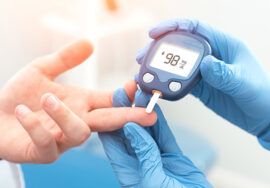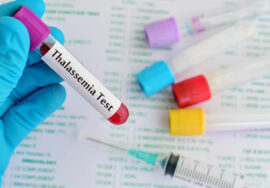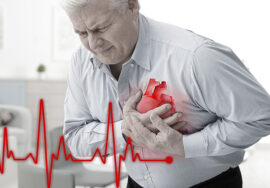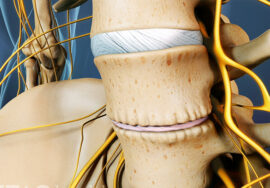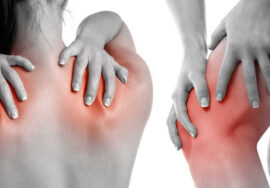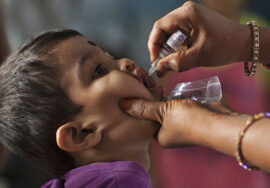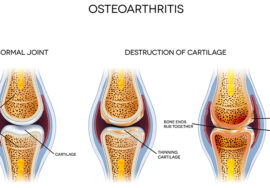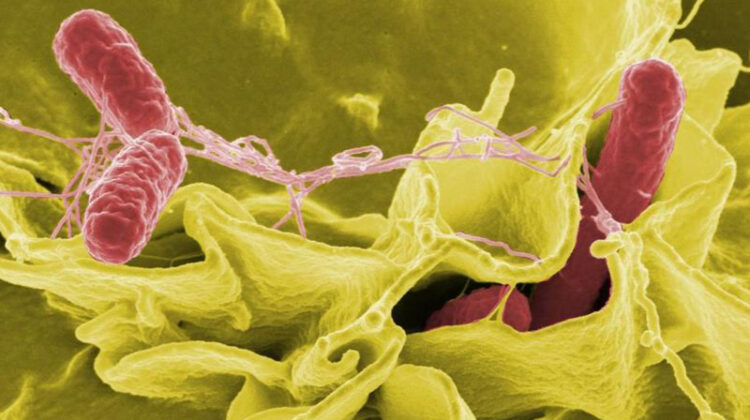
What is Typhoid?
Typhoid fever is caused by Salmonella typhi bacteria. Typhoid fever is rare in developed countries. It is still a serious health threat in the developing world, especially for children.
Contaminated food and water or close contact with an infected person cause typhoid fever. Signs and symptoms usually include:
- High fever
- Headache
- Stomach pain
- Constipation or diarrhea
Most people who have typhoid fever feel better a few days after they start antibiotic treatment, but a small number of them may die of complications. Vaccines against typhoid fever are only partially effective. Vaccines usually are reserved for those who may be exposed to the disease or who are traveling to areas where typhoid fever is common.
Symptoms
Signs and symptoms are likely to develop gradually — often appearing one to three weeks after exposure to the disease.
Early Illness
Signs and symptoms include:
- Fever that starts low and increases daily, possibly reaching as high as 104.9 F (40.5 C)
- Headache
- Weakness and fatigue
- Muscle aches
- Sweating
- Dry cough
- Loss of appetite and weight loss
- Stomach pain
- Diarrhea or constipation
- Rash
- Extremely swollen stomach
Later Illness
Without treatment, you may:
- Become delirious
- Lie motionless and exhausted with your eyes half-closed in what's known as the typhoid state
Life-threatening complications often develop at this time.
In some people, signs and symptoms may return up to two weeks after the fever has subsided.
Causes
Typhoid fever is caused by dangerous bacteria called Salmonella typhi. Salmonella typhi is related to the bacteria that cause salmonellosis, another serious intestinal infection, but they aren't the same.
Fecal-Oral Transmission Route
Most people in developed countries pick up typhoid bacteria while they're traveling. Once they have been infected, they can spread it to others through the fecal-oral route.
This means that Salmonella typhi is passed in the feces and sometimes in the urine of infected people. If you eat food that has been handled by someone who has typhoid fever and who hasn't washed carefully after using the toilet, you can become infected.
In developing countries, where typhoid fever is established, most people become infected by drinking contaminated water. The bacteria may also spread through contaminated food and through direct contact with someone who is infected.
Typhoid Carriers
Even after antibiotic treatment, a small number of people who recover from typhoid fever continue to harbor the bacteria. These people, known as chronic carriers, no longer have signs or symptoms of the disease themselves. However, they still shed the bacteria in their feces and are capable of infecting others.
Risk Factors
- Work in or travel to areas where typhoid fever is established
- Work as a clinical microbiologist handling Salmonella typhi bacteria
- Have close contact with someone who is infected or has recently been infected with typhoid fever
- Drink water polluted by sewage that contains Salmonella typhi
Complications
Intestinal bleeding or holes
Intestinal bleeding or holes in the intestine are the most serious complications of typhoid fever. They usually develop in the third week of illness. In this condition, the small intestine or large bowel develops a hole. Contents from the intestine leak into the stomach and can cause severe stomach pain, nausea, vomiting and bloodstream infection (sepsis). This life-threatening complication requires immediate medical care.
Other, Less Common Complications
- Inflammation of the heart muscle (myocarditis)
- Inflammation of the lining of the heart and valves (endocarditis)
- Infection of major blood vessels (mycotic aneurysm)
- Pneumonia
- Inflammation of the pancreas (pancreatitis)
- Kidney or bladder infections
- Infection and inflammation of the membranes and fluid surrounding your brain and spinal cord (meningitis)
- Psychiatric problems, such as delirium, hallucinations and paranoid psychosis
With quick treatment, nearly all people in industrialized nations recover from typhoid fever. Without treatment, some people may not survive complications of the disease.
Prevention
Safe drinking water, improved sanitation and adequate medical care can help prevent and control typhoid fever. Unfortunately, in many developing nations, these may be difficult to achieve. For this reason, some experts believe that vaccines are the best way to control typhoid fever.
A vaccine is recommended if you live in or are traveling to areas where the risk of getting typhoid fever is high.
Vaccines
Two vaccines are available.
- One is given as a single shot at least one week before travel.
- One is given orally in four capsules, with one capsule to be taken every other day.
Neither vaccine is 100% effective. Both require repeat immunizations because their effectiveness wears off over time.
Because the vaccine won't provide complete protection, follow these guidelines when traveling to high-risk areas:
- Wash your hands
- Avoid drinking untreated water
- Avoid raw fruits and vegetables
- Choose hot foods
- Know where the doctors are
With quick treatment, nearly all people in industrialized nations recover from typhoid fever. Without treatment, some people may not survive complications of the disease.
Prevent Infecting Others
If you're recovering from typhoid fever, these measures can help keep others safe:
- Take your antibiotics
- Wash your hands often
- Avoid handling food
How Long Does Typhoid Stay?
Generally, the signs and symptoms of typhoid fever start showing up gradually over a period of 10-14 days after exposure to the bacteria. The duration of the typhoid illness is about 3-4 weeks.




